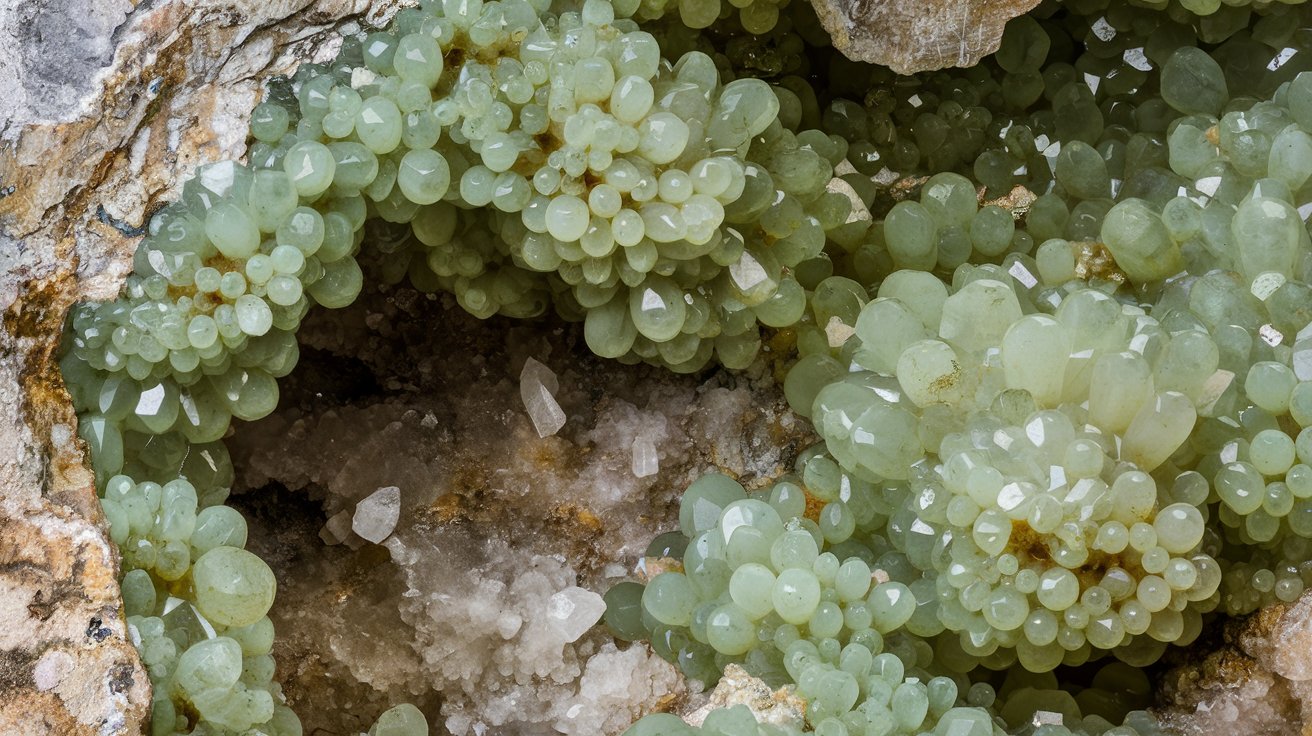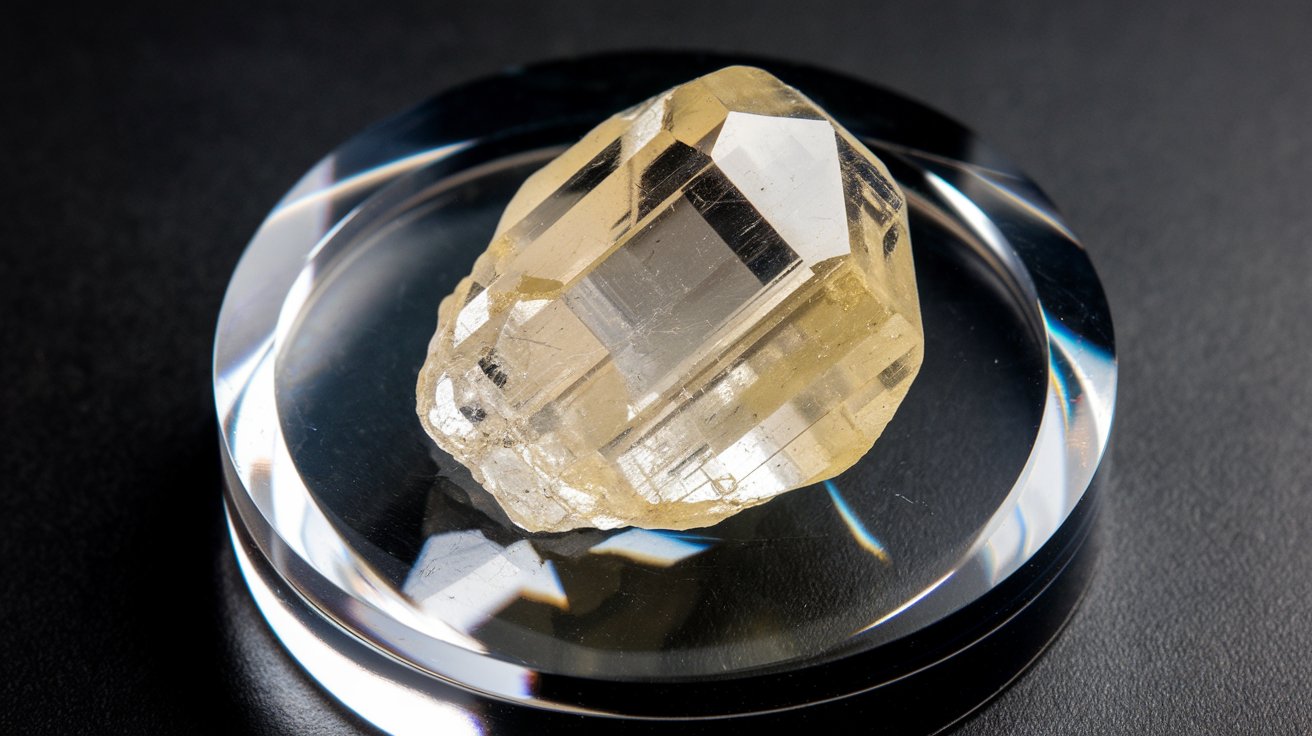
Artinite is a fascinating mineral that often goes unnoticed in the world of geology. But what exactly is Artinite? It's a hydrous magnesium carbonate mineral, typically found in serpentine rocks. This mineral is known for its delicate, fibrous crystals that resemble tiny snowflakes or cotton balls. Artinite forms in low-temperature hydrothermal environments, making it a rare and intriguing find for mineral collectors. Its unique properties and formation process make it a subject of interest not only for geologists but also for anyone curious about the natural world. Ready to learn more? Here are 35 facts about Artinite that will spark your curiosity!
Key Takeaways:
- Artinite is a unique mineral with a fluffy, white appearance, often found in serpentine rocks. It's loved by collectors and used for educational purposes, but needs gentle care to maintain its delicate structure.
- Found in Italy, California, Greece, New Zealand, and Russia, Artinite is a "cotton candy mineral" with environmental potential. It's a favorite among mineral enthusiasts and a valuable tool for learning about carbonate minerals.
What is Artinite?
Artinite is a fascinating mineral with unique properties and characteristics. Let's dive into some intriguing facts about this mineral.
-
Artinite is a hydrated magnesium carbonate mineral. Its chemical formula is Mg2(CO3)(OH)2·3H2O.
-
This mineral was first discovered in Italy in 1902. It was named after the Italian mineralogist Ettore Artini.
-
Artinite typically forms in fibrous or radial aggregates. These formations often resemble fluffy, white tufts.
-
The mineral is usually found in serpentine rocks. These rocks are rich in magnesium, which is essential for Artinite's formation.
-
Artinite has a low hardness on the Mohs scale, rating between 2.5 and 3. This makes it relatively soft compared to other minerals.
Physical Properties of Artinite
Understanding the physical properties of Artinite can help in identifying and studying this mineral.
-
Artinite has a white to colorless appearance. Its fibers can sometimes appear slightly translucent.
-
The mineral has a silky luster. This gives it a somewhat shiny appearance, especially under light.
-
Artinite's specific gravity ranges from 2.0 to 2.1. This is relatively low, indicating it is not very dense.
-
When exposed to ultraviolet light, Artinite exhibits fluorescence. It can glow a bright white or blue color.
-
Artinite is brittle. It can easily break or crumble when handled roughly.
Chemical Properties of Artinite
The chemical composition of Artinite contributes to its unique characteristics and reactions.
-
Artinite is composed of magnesium, carbon, oxygen, and hydrogen. These elements combine to form its distinct structure.
-
The mineral is soluble in acids. When exposed to hydrochloric acid, it will effervesce and dissolve.
-
Artinite can dehydrate when heated. This process removes the water molecules from its structure, altering its appearance and properties.
-
The mineral can absorb moisture from the air. This hygroscopic nature can cause it to change over time if not stored properly.
-
Artinite's carbonate content makes it reactive with acids. This is a common trait among carbonate minerals.
Occurrence and Locations
Artinite is found in specific geological settings and locations around the world.
-
Artinite is commonly found in serpentinized ultramafic rocks. These rocks are rich in magnesium and form in specific geological environments.
-
Significant deposits of Artinite have been found in California, USA. The Clear Creek area is particularly known for its Artinite specimens.
-
The mineral is also found in Greece. The island of Euboea has notable occurrences of Artinite.
-
New Zealand has reported findings of Artinite. The mineral is found in serpentine-rich areas of the country.
-
Artinite can also be found in Russia. The Ural Mountains are a known source of this mineral.
Uses and Applications
While not widely used in industry, Artinite has some interesting applications and uses.
-
Artinite is primarily a collector's mineral. Its unique appearance and properties make it a favorite among mineral enthusiasts.
-
The mineral is used in educational settings. It helps students learn about mineralogy and the properties of carbonate minerals.
-
Artinite can be used in research. Scientists study its properties to understand more about magnesium carbonates and their formation.
-
The mineral has potential environmental applications. Its ability to absorb moisture and react with acids could be useful in certain environmental processes.
-
Artinite is sometimes used in decorative pieces. Its fibrous, fluffy appearance makes it an interesting addition to mineral displays.
Fun Facts about Artinite
Here are some fun and lesser-known facts about Artinite that might surprise you.
-
Artinite can form in caves. The mineral can precipitate from magnesium-rich waters in cave environments.
-
The mineral can sometimes be found in association with other minerals. These include brucite, hydromagnesite, and magnesite.
-
Artinite's fibrous structure can sometimes resemble cotton candy. This has earned it the nickname "cotton candy mineral" among collectors.
-
The mineral's name, Artinite, honors Ettore Artini. He was a prominent Italian mineralogist who contributed significantly to the field.
-
Artinite is often used in mineral identification kits. Its unique properties make it a good example for teaching mineral identification techniques.
Preservation and Care
Proper care is essential to maintain the quality and appearance of Artinite specimens.
-
Artinite should be kept in a dry environment. Its hygroscopic nature means it can absorb moisture from the air, which can alter its appearance.
-
The mineral should be handled gently. Its brittle nature means it can easily break or crumble if not handled with care.
-
Artinite should be stored away from acids. Exposure to acids can cause the mineral to effervesce and dissolve.
-
The mineral can be cleaned with a soft brush. This helps remove dust and debris without damaging its delicate fibers.
-
Artinite specimens should be displayed in a protected case. This helps prevent damage from handling and environmental factors.
Artinite: A Hidden Gem in the Mineral World
Artinite might not be the most famous mineral, but it sure has its unique charm. Found in serpentine rocks, this white or colorless mineral often forms delicate, fibrous crystals that look like tiny snowflakes. Its chemical composition, Mg2(CO3)(OH)2·3H2O, makes it a fascinating subject for mineralogists and collectors alike.
This mineral's rarity and beauty make it a prized addition to any collection. Whether you're a seasoned collector or just starting out, artinite offers a glimpse into the intricate and diverse world of minerals. Its formation process, involving low-temperature hydrothermal activity, adds another layer of intrigue.
So next time you come across artinite, take a moment to appreciate its delicate structure and the natural processes that created it. This hidden gem truly embodies the wonders of the mineral kingdom.
Frequently Asked Questions
Was this page helpful?
Our commitment to delivering trustworthy and engaging content is at the heart of what we do. Each fact on our site is contributed by real users like you, bringing a wealth of diverse insights and information. To ensure the highest standards of accuracy and reliability, our dedicated editors meticulously review each submission. This process guarantees that the facts we share are not only fascinating but also credible. Trust in our commitment to quality and authenticity as you explore and learn with us.


